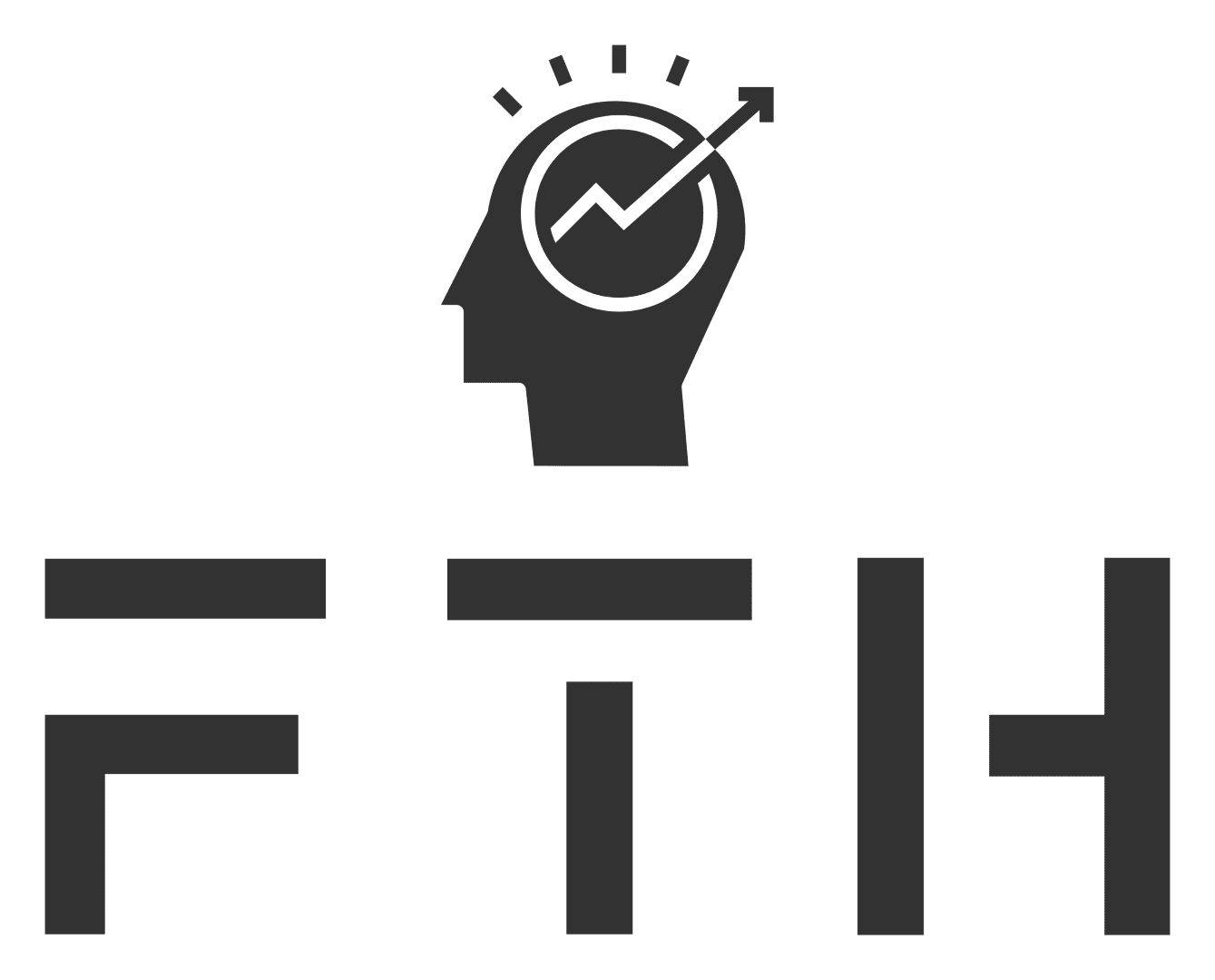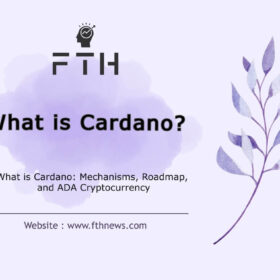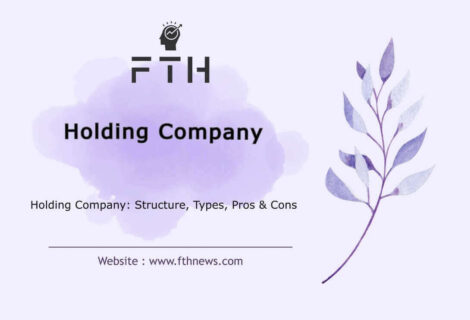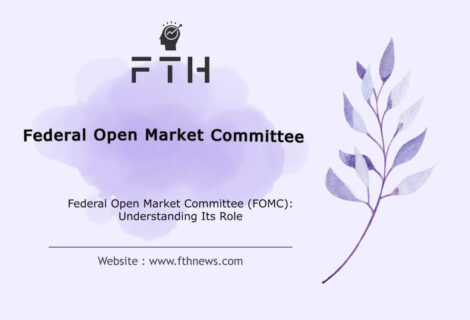
In the dynamic realm of cryptocurrencies, stability is often elusive. However, amidst the volatility, one digital currency has emerged as a beacon of consistency – Tether (USDT). This stablecoin, tethered to the value of the US dollar, plays a pivotal role in the ever-evolving landscape of digital transactions.
What is Tether (USDT)?
Tether, often abbreviated as USDT, stands out in the world of digital currencies as a stablecoin designed to shield users from the volatile nature of the market. With its fixed price, Tether allows individuals to navigate extreme market fluctuations with a sense of stability. Essentially, it serves as a digital representation of the US dollar, enabling seamless digital transfers of value.
As a stablecoin, Tether belongs to a category of digital currencies known as Stable Coins. These coins derive their stability from being pegged to tangible assets such as commodities. The value of stablecoins is intrinsically linked to the worth of the underlying assets, resulting in a price that remains relatively constant over time. While there are several USD-backed stablecoins in the market, Tether, denoted as USDT, currently holds the position of the most influential stablecoin.
What is the Purpose of Tether (USDT)?
Tether serves two primary functions in the realm of digital currencies:
Mitigating Market Fluctuations: Tether provides a safeguard against the unpredictable nature of the digital currency market. When faced with extreme market fluctuations, users can swiftly convert their assets into Tether, which maintains a stable value. For instance, let’s consider a scenario where you initially purchased one bitcoin for $8,000. As the price later rises to $10,000, converting your bitcoins into Tether would secure 10,000 USDT units. Subsequently, if the price of Bitcoin decreases to $6,000, your capital remains at $10,000 in Tether, allowing you to capitalize on lower bitcoin prices.
Efficient Transfer of Funds: Tether facilitates the seamless transfer of money to exchanges and wallets in dollars. This feature proves especially useful for traders looking to navigate the digital currency space with ease. Tether transactions are akin to sending an email, making it a quick and straightforward process. This digital currency can be conveniently stored in various digital wallets on mobile devices or computers, as well as on wallets within exchanges.
Moreover, Tether operates on several blockchains, including Bitcoin, Ethereum, Tron, Solana, Polygon, Olench, Elgorand, and others. This broad compatibility ensures easy accessibility, allowing users to store Tether on a variety of wallets such as Ethereum, Tron, Solana, and Olench. This versatility and accessibility contribute to the widespread popularity of Tether among traders and users in the digital currency ecosystem.
The Founders of Tether (USDT)
The inception of Tether as a digital currency dates back to 2014 when its founders embarked on a mission to create a stablecoin pegged to the US dollar. The visionary trio behind this project consists of:
Brock Pierce:
A former Hollywood actor turned entrepreneur, Brock Pierce has been a prominent figure in the cryptocurrency industry. Notably, he was elected as the director of the Bitcoin Foundation in May 2014. Pierce holds ownership of Bitfinex and Tether Limited, solidifying his influential role in the development and management of Tether.
Reeve Collins:
An entrepreneur and chief executive officer with a background in online advertising and marketing, Reeve Collins played a crucial role in the early stages of Tether. He is also recognized as the founder and former executive director of vAtomic Systems, showcasing his expertise in innovative technologies.
Craig Sellars:
A seasoned software engineer and a notable expert in cryptocurrencies and blockchain technology, Craig Sellars is one of the founding minds behind Tether. His contributions extend beyond Tether, as he is also credited as one of the founders of the Omni Layer protocol, a second layer built on the Bitcoin blockchain.
Initially named Realcoin, the project underwent a transformation and was later rebranded as Tether. The founders envisioned creating a stable and fixed-value digital asset, aiming to ensure that each USDT token maintained a value equivalent to one US dollar. This commitment to stability and reliability has played a significant role in establishing Tether as a leading force in the realm of stablecoins.
How Tether (USDT) Operates
Now that we have a grasp of what Tether is, let’s delve into how this digital currency operates. Originally distributed on the Omni layer, a platform built on the Bitcoin blockchain, Tether has expanded its reach to various other blockchains, including Bitcoin, Ethereum, Tron, Solana, and Elgorand.
The controversial claim that each Tether is equivalent to 1 US dollar stems from the fact that the US dollar itself lacks intrinsic backing, having severed ties with gold in 1971. Instead, the dollar relies on the economic, political, and military strength of the United States, coupled with its global acceptance for international transactions. This makes the value of the dollar susceptible to fluctuations and changes.
However, Tether has not been without its challenges. Legal and accounting issues have emerged, with entities like the US Commodity Futures Trading Commission (CFTC) highlighting concerns about the lack of transparency and accuracy in Tether’s dollar backing. The significant increase in the circulation of Tether in recent years has also raised questions, potentially exerting additional pressure on the US dollar.
In the current landscape, Tether faces stiff competition from robust alternatives like Pax Gold. Some of these competitors offer different and more attractive support structures, such as backing by gold or a basket of various fiat currencies. Others strive to capture market attention by providing enhanced services and features, including privacy protection, cost reduction, increased speed, and heightened security.
The aforementioned issues underscore the inherent centralization of Tether.
The stability of Tether’s value hinges on the commitment and capability of the Tether Foundation to uphold its peg. For instance, if an exchange running low on US dollars for customers looking to sell Tether faces a shortage, the Tether Foundation must assure the exchange that the required dollars will be supplied within a reasonable timeframe. Failure to do so could result in a devaluation of Tether compared to its counterpart currency.
The term “peg” refers to fixing the exchange rate of a currency to the value of another currency. Many countries peg their currencies to the dollar, often maintaining a portfolio of pegged currencies.
Ultimately, Tether’s operations are contingent on maintaining proper financial relationships and obtaining ongoing permission from legal authorities. While traditional cryptocurrencies operate independently from fiat currency, Tether requires users to undergo identity verification to convert their currency into dollars. This structure, while providing certain advantages, also introduces dependencies and regulatory considerations that differentiate Tether from other decentralized cryptocurrencies.
Key Features of Tether (USDT) Currency
Tether (USDT) digital currency boasts several crucial features that set it apart in the cryptocurrency landscape:
Transaction Time:
Traditional deposit and withdrawal processes on foreign exchanges can be time-consuming, often taking 1 to 4 working days. Tether transactions, on the other hand, occur in just a few minutes. This swift transaction speed is a significant advantage for cryptocurrency traders, enabling them to capitalize on time-sensitive opportunities like arbitrage, even during non-business hours, weekends, or public holidays.
Transaction Fees:
Tether leverages decentralized networks to move millions of dollars with minimal costs, typically below one dollar. In contrast to the high expenses associated with SWIFT transfers, Tether’s ability to facilitate cost-effective transactions contributes to its appeal, especially for users navigating different cryptocurrency markets.
Price Stability:
The inherent volatility of cryptocurrencies makes price stability a valuable attribute. Tether’s value is pegged to one US dollar, ensuring stability in comparison to the fluctuating values of other digital assets. While the stability of Tether’s value at one dollar is an ideal scenario, it’s important to note that converting Tether to real dollars may involve transfer fees.
Risk Mitigation – Staying on the Sidelines:
Recognizing the inherent risks in cryptocurrency markets, Tether provides a strategic option for traders looking to stay on the sidelines during periods of uncertainty. By converting their capital into USDT, traders can effectively move to a stable position, waiting for more favorable market conditions before re-entering the market. This flexibility allows traders to safeguard their funds during potential downturns.
Safe Haven in Volatile Markets:
Tether’s stability makes it an attractive choice as a safe haven during times of market volatility. Traders can swiftly convert their assets to USDT to shield themselves from unpredictable price movements, only returning to the market when conditions are more favorable. This is particularly valuable for those who wish to temporarily exit the cryptocurrency space without converting their assets to fiat currencies.
Decentralized Nature:
Tether operates on decentralized networks, providing users with increased autonomy over their transactions. This decentralized structure enables the movement of funds without relying on traditional banking systems, enhancing the efficiency and accessibility of financial transactions.
While Tether offers these advantageous features, users should exercise caution and consider the associated fees when converting Tether to fiat currencies. Additionally, it’s crucial to acknowledge the risks associated with keeping funds, whether in fiat or digital currency, on exchanges, emphasizing the importance of transferring assets to personal wallets for enhanced security.
Tether; The first stable digital currency
Tether digital currency belongs to a new generation of digital currencies called stable coins. The purpose of Tether is to maintain the value of digital currency and not to fluctuate; That is, exactly unlike a wide range of digital currencies such as Bitcoin and Ethereum, which have very wide fluctuations. This feature allows it to be used as a currency of exchange and a method of storage.
Stablecoin Tether specifically belongs to the category of stable currencies that use fiat currencies or even gold as a backing. That is, a fiat currency such as US dollar, euro or yen is stored as a backup for each currency in circulation. Tether digital currency is provided in order to create a connection between fiat currencies and crypto currencies, as well as to create stability, transparency and payment of minimum fees for making transfers and exchanges. Tether has a value equal to one US dollar. It also tries to maintain a 1:1 ratio against the dollar.
Comparison of Tether digital currency with fiat dollar currency
Tether is an algorithmic digital currency that claims that each unit is equal to one US dollar; This currency was introduced as a stablecoin from the very beginning, which means that its price should be relatively stable and dependent on the price of the US dollar. The dollar is a physical equivalent issued by the United States government, and as one of the most common currencies in the world, it is used as the official currency by many countries. However, sometimes we see the difference between the price of Tether and the dollar.
Unlike paper dollars, Tether is easily transferable around the world and is much more secure than dollars because it uses blockchain technology and offers more protection against internet fraud and theft. On the other hand, the process of cashing Tether is more complicated than paper dollars.
In general, Tether and dollar both have their own advantages and disadvantages; Tether is highly secure, but its price volatility is higher than the dollar. In contrast to the dollar, it has lower price volatility, but it is more difficult to transfer than Tether.
Distinguishing USDT from Other Stablecoins
While Tether (USDT) once dominated the stablecoin market, the landscape has evolved, and a variety of stablecoins are now available. Understanding the differences between Tether and other stablecoins is crucial for navigating the expanding choices. The primary distinctions lie in the issuing entity, the backing mechanism, and the approach to maintaining price stability.
1. Issuing Entity and Support:
USDT (Tether): Follows the IOU (I Owe You) model. It is backed by a central entity that supports the stablecoin’s value with its assets. Users are assured that they can redeem their investment at any time at a one-to-one exchange rate.
Algorithmic Stablecoins (e.g., USDD Tron, USDN Waves): Maintain exchange rates through trading incentives and automatic token burning. Unlike Tether, algorithmic stablecoins rely on predefined algorithms to determine when to burn or mint tokens based on demand.
DAI (MakerDAO): Also backed by pooled assets, but the value of the backing assets exceeds the total value of DAI. Notably, MakerDAO operates without a central governing body, distinguishing it from Tether.
USDC (Circle): Similar to Tether, USDC is backed by real assets and issued by a centralized entity. The key difference lies in the composition of reserves. USDC holds cash and short-term US government bonds, making it a perceived safer and more transparent asset.
2. Stability Mechanisms:
USDT: The Tether currency itself decides when to burn or mint tokens, without relying on algorithmic mechanisms.
Algorithmic Stablecoins: Utilize algorithms to autonomously adjust token supply based on market demand, with incentives for traders to maintain price stability.
DAI: Achieves stability through smart contracts and collateralized debt positions, ensuring that the value of the collateral exceeds the value of DAI.
USDC: Leverages a reserve of cash and short-term US government bonds to maintain stability, without employing algorithmic mechanisms.
Understanding these differences in issuing models, stability mechanisms, and asset compositions allows users to make informed choices based on their preferences and priorities in the stablecoin market. Each stablecoin’s unique features cater to specific needs within the broader cryptocurrency ecosystem.
Tether’s Troubles: A Historical Overview
Throughout its history, Tether has encountered a series of challenges and controversies that have contributed to concerns within the cryptocurrency community:
1. November 2017 – Alleged Theft:
- Following a hard fork in November 2017, reports emerged claiming that 31 million Tether had been stolen. This incident raised security issues and highlighted vulnerabilities within the Tether ecosystem.
2. January 2018 – Audit Requirement and Transparency Concerns:
- In January 2018, a new hurdle emerged for Tether. Calls for an audit were voiced to ensure the existence of sufficient reserves backing Tether. Concerns grew regarding the company’s transparency and the adequacy of reserves supporting the stablecoin.
3. April 2019 – New York Attorney General Accusations:
- New York Attorney General Letitia James accused iFinex, the parent company of Tether, and the operator of Bitfinex cryptocurrency exchange, of defrauding customers of $850 million. The allegations suggested that the company concealed the issue from investors.
4. Allegations of Fund Mismanagement:
- Court filings revealed that the $850 million was allegedly paid to a Panamanian company named Crypto Capital Corp without a formal contract or agreement. Bitfinex was accused of withdrawing $700 million from Tether’s cash reserves to conceal the shortfall.
5. Company Response:
- In response to the accusations, the companies involved, including iFinex and Bitfinex, asserted that the case was presented in bad faith with incorrect and false claims. They contended that the funds were not lost but rather seized, and efforts were being made to reclaim them. The companies expressed their commitment to enforcing their rights and suggested that the Attorney General’s Office was attempting to harm their clients.
These incidents have contributed to a complex narrative surrounding Tether, emphasizing the challenges faced by the stablecoin issuer in terms of security, transparency, and legal scrutiny. The ongoing developments in the cryptocurrency space underscore the importance of regulatory compliance and robust internal controls for stablecoin projects.
Ensuring Security in the Tether Network
The security of the Tether network is a multifaceted endeavor, incorporating various elements to maintain the integrity and trustworthiness of the stablecoin:
Blockchain Security:
The Tether network relies on the security of the Bitcoin blockchain, which serves as its underlying foundation. The Bitcoin blockchain is renowned for its high level of security, employing the Proof of Work (PoW) algorithm to secure the network and prevent malicious attacks.
Security of Tether Reserves:
Tether asserts that it holds reserves equivalent to one US dollar for each USDT token in circulation. To demonstrate transparency, Tether publishes daily financial reports on its website, providing users with real-time insights into the reserves. Periodic audits are also conducted to verify the accuracy of these claims. The security of the Tether token is intricately linked to the precision and transparency of these reserves.
Security of Export and Withdrawal Processes:
Tether employs a multi-signature (multi-sig) pattern to manage the export and withdrawal processes of its tokens. This security mechanism necessitates the verification of multiple keys before each token can be exported or reclaimed. These keys are stored in hardware wallets, enhancing the security of Tether by safeguarding against unauthorized access.
Cooperation with Exchanges:
Tether collaborates with various exchanges and trading platforms, forming a crucial aspect of the network’s security infrastructure. These partnerships play a pivotal role in addressing security concerns and resolving network issues promptly. The synergy between Tether and exchanges contributes to the overall security and stability of the network.
It’s important to note that ongoing efforts to maintain and enhance security are imperative in the dynamic landscape of cryptocurrencies. Regular audits, transparent reporting, and collaborative initiatives with industry stakeholders collectively contribute to reinforcing the security measures within the Tether network. Users and market participants benefit from a combination of blockchain robustness, reserve transparency, secure processes, and collaborative industry partnerships to instill confidence in the security of the Tether stablecoin.














